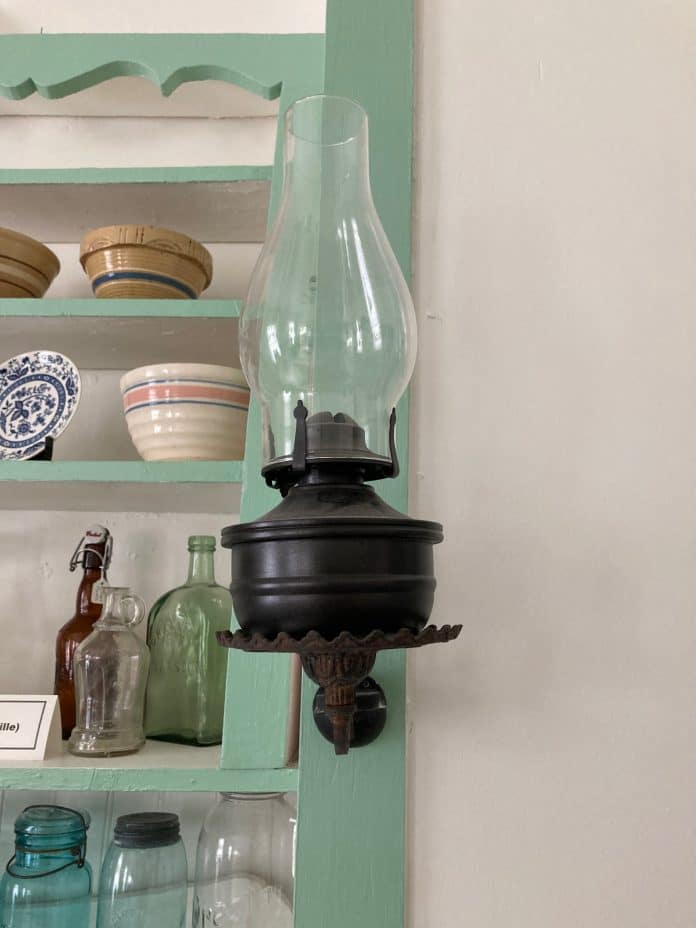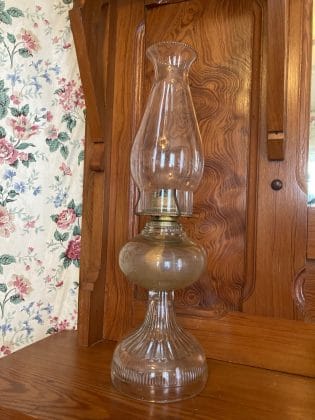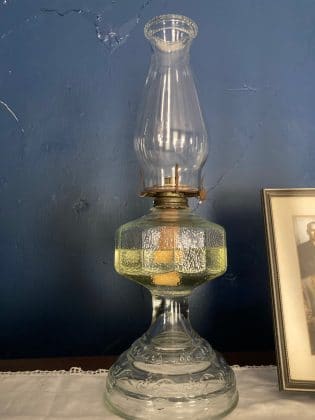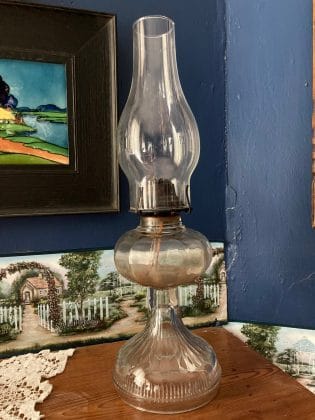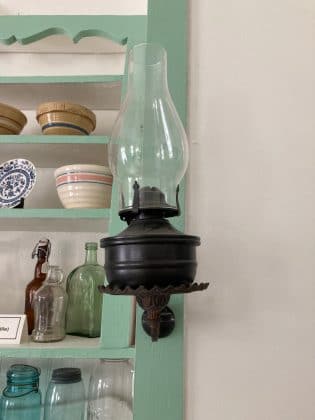Kerosene lamps were invented just about the same time that the May-Stringer House was being built from 1856-58. These lamps were a step up from whale oil lamps and candles in the way that they were safer and cast a brighter and wider light.
The flat wick is made of cotton and draws the kerosene from a glass or metal fount. The wick is held in place by a simple metal housing that controls the airflow to the flame. The glass chimney is also a part of the efficient combustion of the kerosene. The shape and height of the chimney provide the draft needed to keep the flame alive.
There are a number of beautiful kerosene lamps throughout the May-Stringer. The Countryman One Room Schoolhouse has lamps on cast iron wall sconces to throw light on the nearby students’ desks. The 1885 Depot has a collection of railroad signal lanterns that conductors used to communicate with other workers.
While kerosene lamps are now used for emergency lighting in this country, they are still part of everyday life in many parts of the world. Like many utilitarian things, manufactures made them pretty and desirable.
The Museum Schedules!
The May-Stringer tours on Tuesday – Saturday from 11am – 3pm – 352-799-0129
The 1885 Depot tours on Thursday – Saturday from Noon – 3pm – 352-799-4766
The Countryman One Room Schoolhouse is open on Saturdays from Noon – 3pm – 352-515-3054

